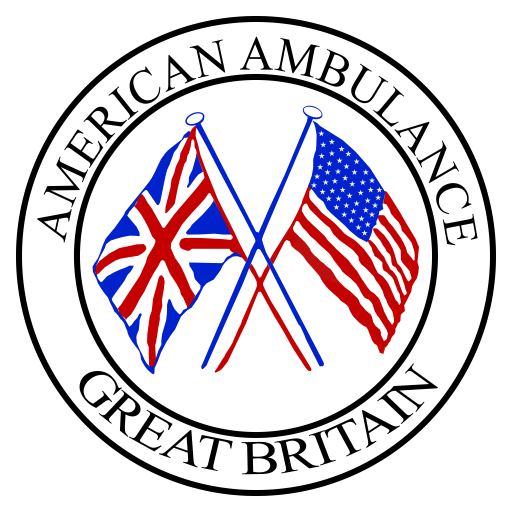Below Will be a brief overview of various aspects of the AAGB. We’ll briefly cover; the organisational structure, the vehicles and the uniforms of the AAGB. For more in depth articles on various subjects, have a browse through our blog!
Organisational structure

9 Grosvenor Gardens, Headquarters AAGB
June 1940 – February 1945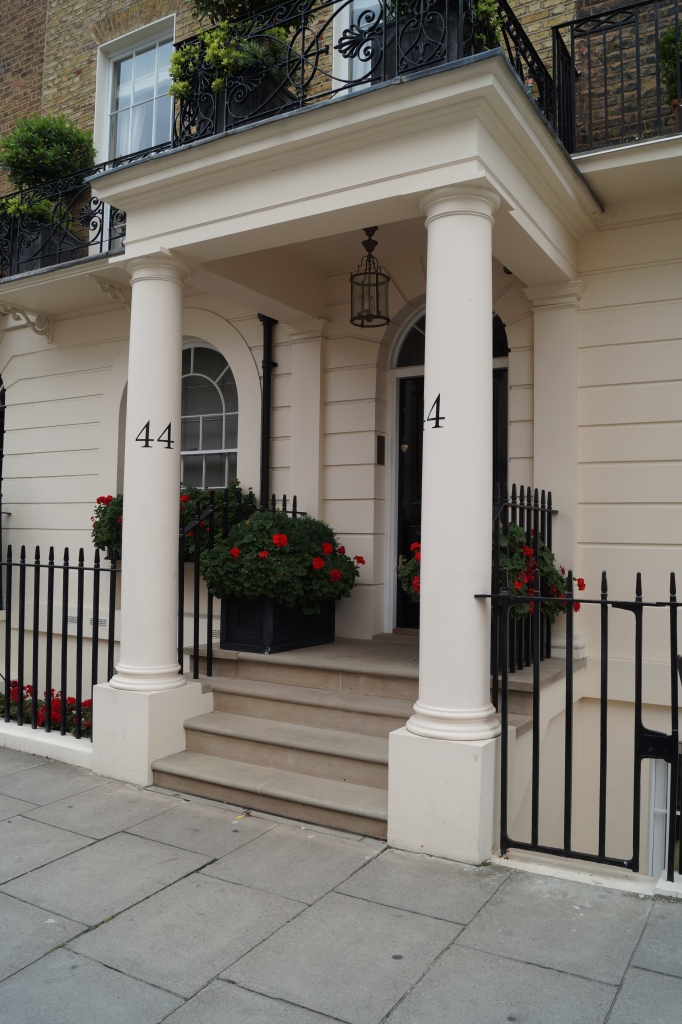
44 Lower Belgrave Street, Headquarters AAGB
March-October 1945
The AAGB was run from 9 Grosvenor Gardens for most of the war, this was the office of The Pyrene Company, a fire extinguisher company founded by one of the same people who founded the AAGB. They moved to 44 Lower Belgrave Street in March 1945 for an unknown reason.
Initially, drivers were gathered from the Women’s Transport Service (FANY) and Mechanised Transport Corps (MTC). In a short amount of time the AAGB had recruited their own drivers and stoped using the FANY. Through the duration of the war the AAGB and MTC worked together, much of the training and structure followed that of the MTC and it’s clear their partnership was a close one.
Vehicles
At stand down, the AAGB operated 309 vehicles; 135 Ambulances, 65 Surgical Units, 100 First Aid Posts and 9 Vans.

A lineup of Surgical Units 
Front of a First Aid Post A or C 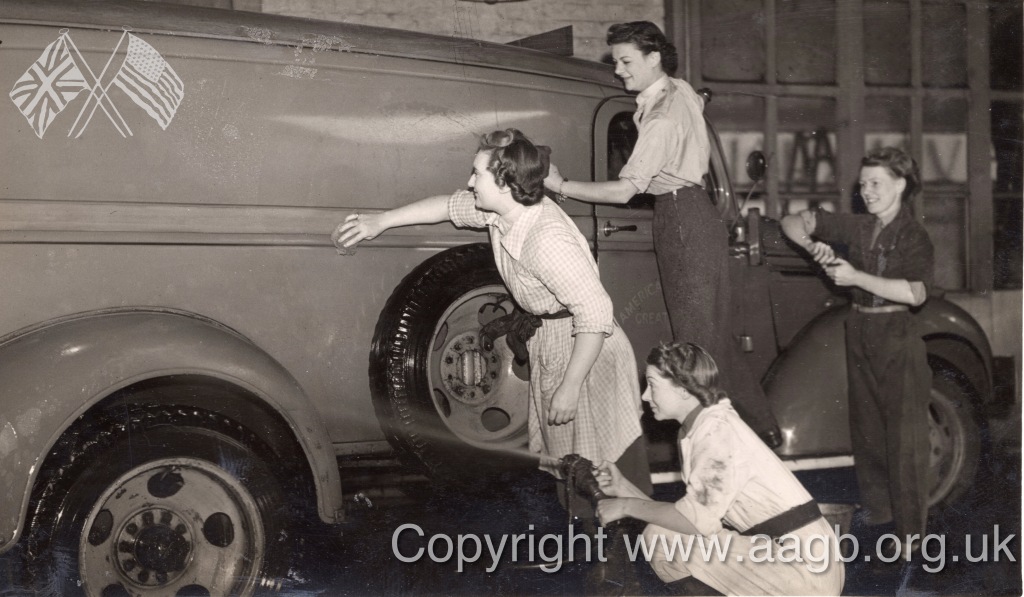
Chevrolet Ambulance 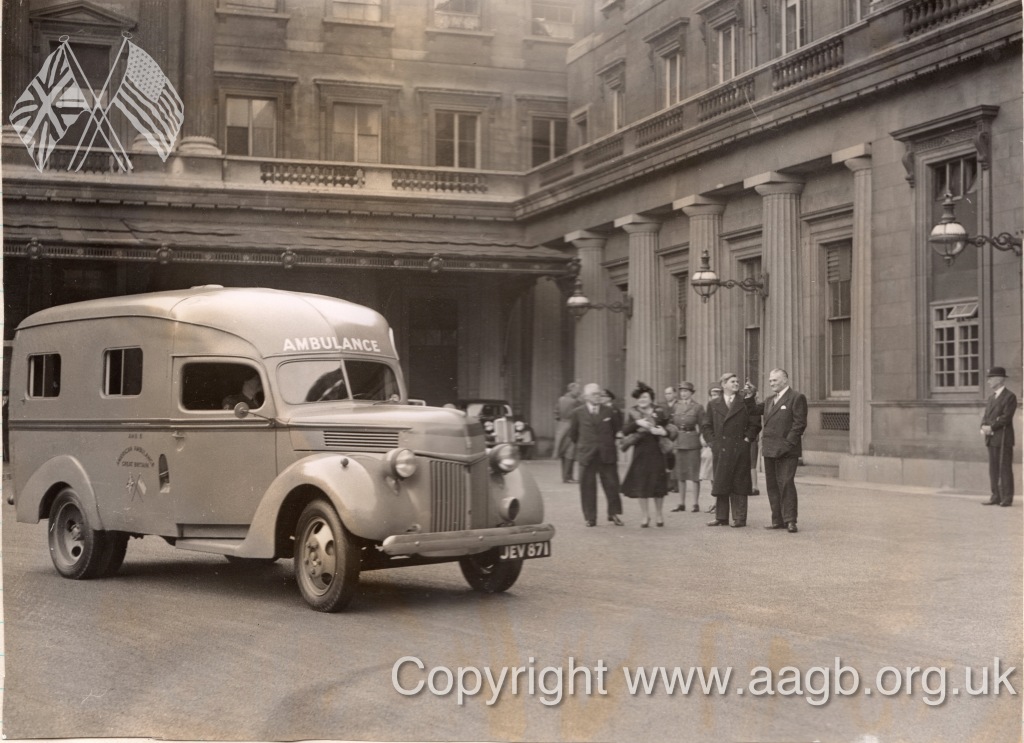
Ford ROIT 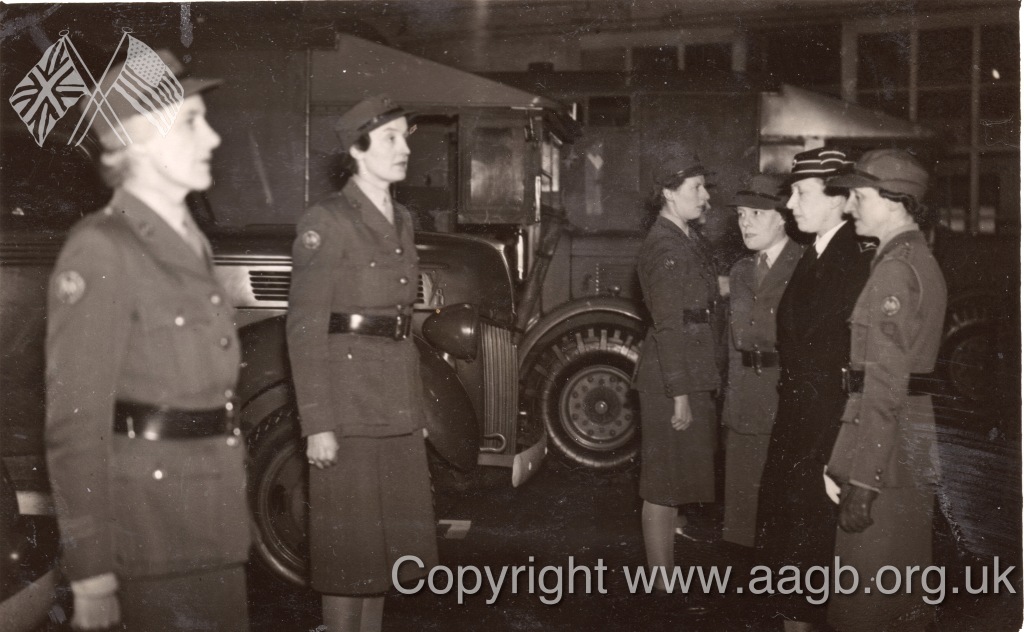
In the background, two Austin k2/Y
Ambulances
Ambulances were of 5 different makes;
Ford R.O.I.T Ambulances were the most common used by the AAGB, they were 30bhp Ford Chassis cab vehicles from America with a 4 stretcher body built onto the back of it.
Ford Clara Ambulances were 30bhp panel vans converted to carry four Stretchers.
Austin Ambulances were of the K2/Y verity, this type of vehicle saw extensive service with the British Army and was fully British made.
Chevrolet Ambulances were standard American Chevrolet vans that were converted to take four stretchers.
Bedford Ambulances, the AAGB owned one Bedford however they did lease five Ambulances and we believe these were also four stretcher Bedfords.
First Aid Posts
The AAGB operated 100 First Aid Posts, they were all based on the Ford E83W van. 95 of them were standard E83W’s, five of them used the chassis of an E83W and had a large box body on the back, these look fairly makeshift and appear to have been made of plywood and canvas. During the war, most of these vehicles were converted to transport people.
Surgical Units
Surgical Units were cars designed to transport medical teams to bomb sites, eventually they were mainly used to transport siting casualties around the country. The bulk of these were high power American saloon cars of many makes such as Plymouth, Packard and Chevrolet.

Above is a table from 1945 detailing the vehicles available to disposal to local hospitals after stand down.
Uniforms

The AAGB shared the same uniform as the MTC.
They wore a tunic and skirt that was fairly standard of the era and other female organisations.
The distinctive feature was the hat which is in a different style to those commonly worn by other organisations. As well as that hat the AAGB wore forage caps, AAGB ones had AAGB buttons and an AAGB cap badge and had red piping around the top, MTC ones had MTC badges and buttons with blue piping around the top.
Members of the MTC that worked for the AAGB had all MTC badges and buttons on their tunic, with the addition of a blue cloth AAGB arm badge sewn onto the left sleeve (some had them on both sleeves).
Members of the AAGB wore the same as the above but with AAGB badges and buttons on the tunic. They also had service badges worn under the AAGB cloth arm badge which denoted how long they’s served.
